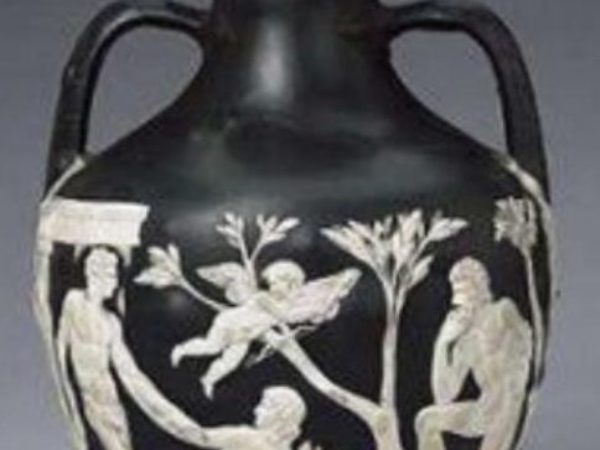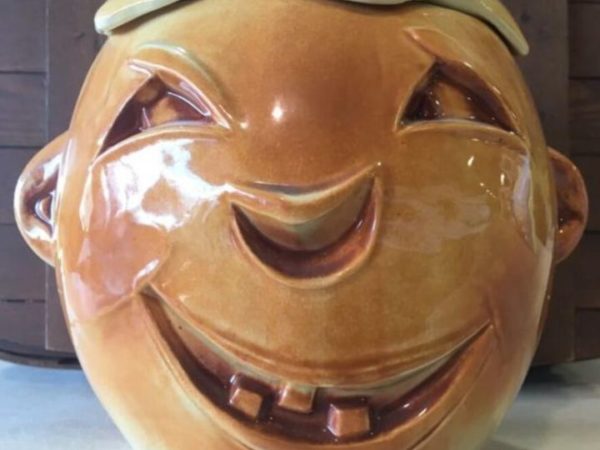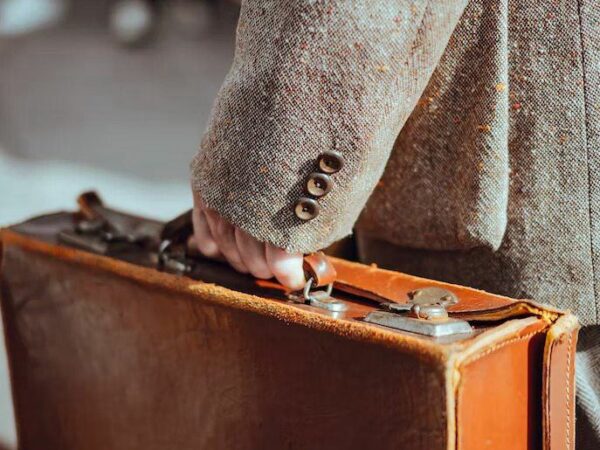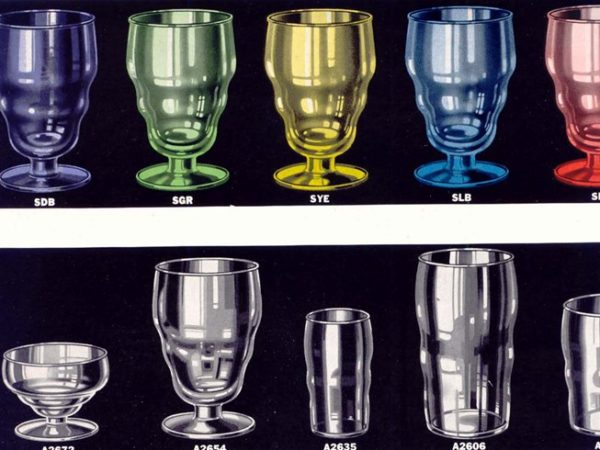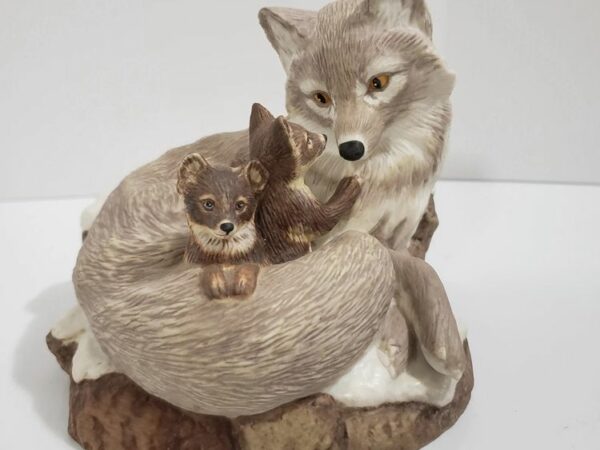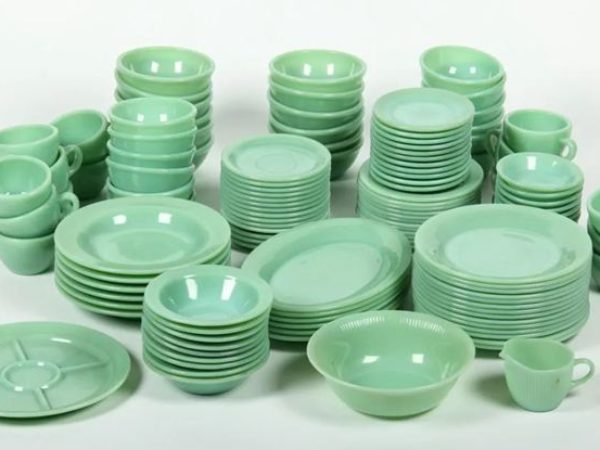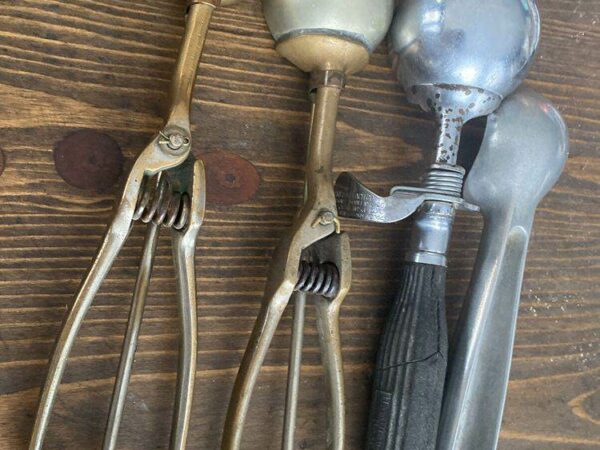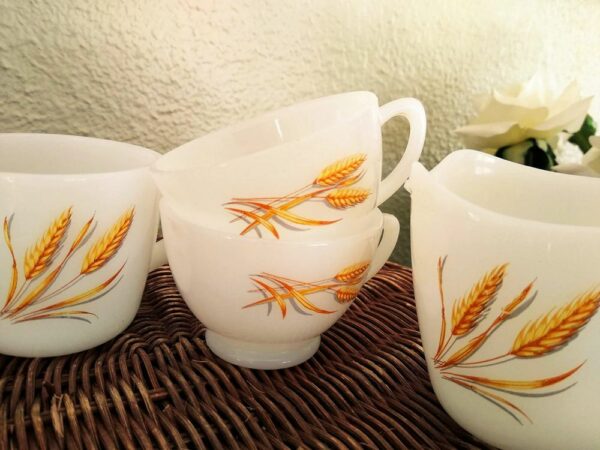Kettles have been available since ancient times. Although, they’ve taken different shapes over the centuries. They’ve evolved from basic open pans to the elegant versions in your kitchen now. In fact, you can say that the kettle is the second most popular kitchen equipment after the pot.
Antique kettles are similar to the designs we have today. What’s different is mostly the materials used and the method of powering them. Around 3500 B.C, Mesopotamia (the Western Asian region where civilization was first recorded) had tea kettles made from iron and bronze. Reports state that these kettles were used to heat water for medical reasons. The Romans also used bronze kettles, although theirs were more similar to open pans with lids to boil water.
Antique kettles have a distinct charm that makes one wish it was still the Victorian era or the early days. Whenever I come across my antique tea kettles, I’m pushed to cozy up beside the chimney (pretending it’s a hearth) with a steaming cup of tea poured from my precious antique.
There’s this undeniable allure that comes with these pieces of history.
The best part of it all is that antique kettles are not just for aesthetics; they can still be used. Although, you’ll have to be careful to avoid ruining the condition of the kettle. Since you’re here, why don’t you read on to satisfy your curiosity about collecting antique kettles?
Table of Contents
The History of Antique Kettle
There is a lot of argument around the origin of the first kettle. Some argue that the Asians should take full credit for this creation, while others claim that the original teakettle was manufactured in Europe, specifically the United Kingdom.
For now, most global historians have reached an agreement that the first kettle was produced in England, but its design had to be inspired by the round Chinese wine pourer.
Kettles PRE-1900s
During the mid-1600s, the English imported wine pourers from Asia and Islamic coffee pots from other regions. So, historians believe that these designs inspired the first kettles.
It was during this same period that tea made its first debut in Europe. Water was first boiled in the kettles with the tea bags over the open flames. The kettle at this time took the shape of an iron cauldron. After a while, teapots were manufactured to make the entire process more elegant and fitting.
In the early days, at least before the 20th century, the middle and lower class managed with kettles that looked like cauldrons. While the wealthy used the famous designs similar to what we have now. If you wanted to know how rich a family was, a look at their early tea kettle was enough to give an idea. Tea used to be a luxury meal and was mainly accessible and affordable for the very wealthy individuals in society.
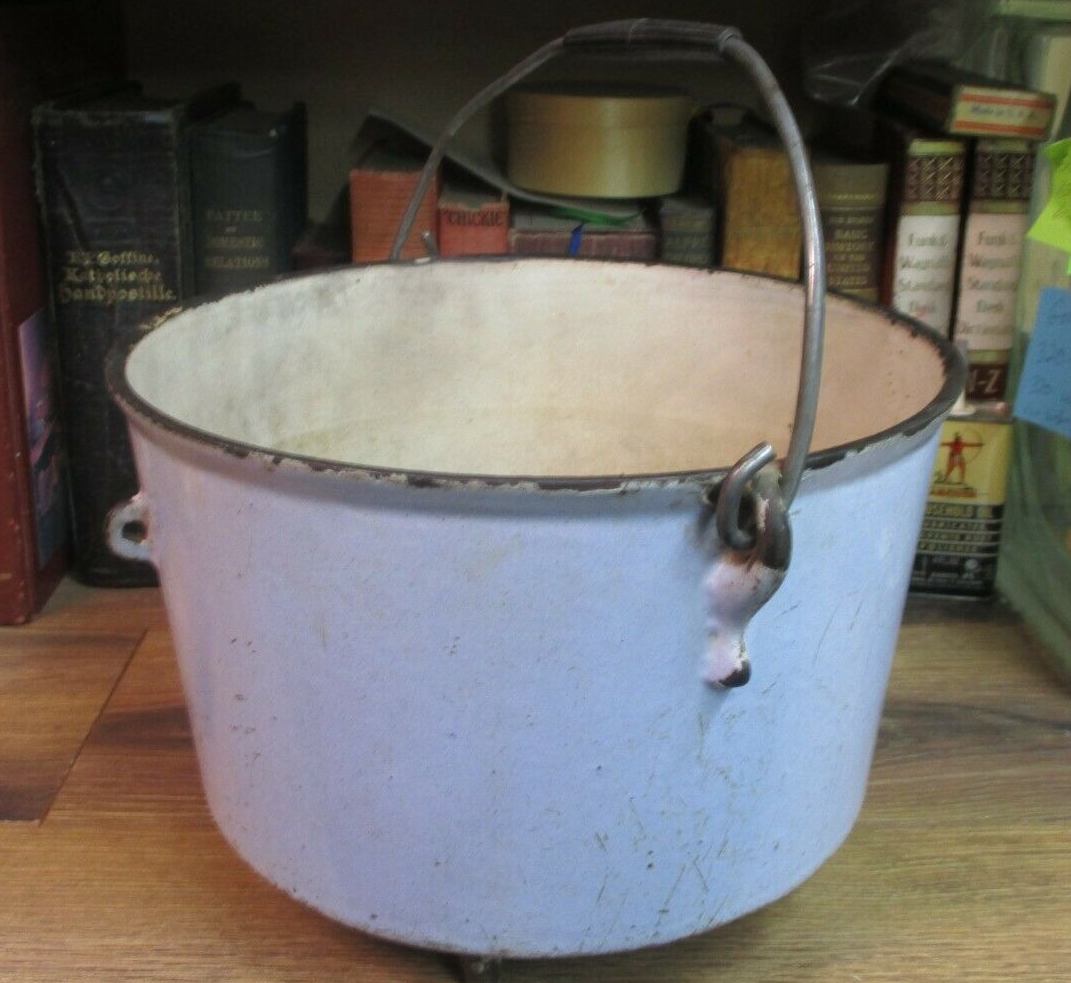
In no time, the East India Tea Company procured the services of artisans in China to produce teapots and kettles which suited European tastes. Many of these designs were inspired by famous European designs, prints, and family signatures. Once teapots and kettles were mass-produced, the price of tea dropped significantly.
At this point, kettles used by ordinary folks and the wealthy could be discerned by their materials.
Copper and cast iron kettles were cheaply produced for the lower class, while silverware was used for the rich. Regardless of the design used, the producers made sure all materials used were good conductors of heat.
Kettles POST-1900s
In the 20th century, each household had at least one kettle. Manufacturers also diversified by using materials like cast aluminum and enamel metals.
The discovery of electric kettles led to a decline in the production of flame-powered kettles. Starting from the 1920s, electric kettles were produced en masse. One of the most popular electric tea kettles was the Russell Hobbs-produced K1 electric tea kettle. It debuted in the English markets in 1955.
Today, underdeveloped world regions still depend on non-electric kettles made from cast iron, aluminum, and enameled metals. In contrast, the western world has moved on with electric kettles.
The Types of Antique Kettle
Antique kettles, aka teakettles, are mainly differentiated by their materials. Rigid materials like chromed, enamel steel, cast iron, and stainless copper are common materials used to produce antique kettles. A typical antique kettle is used on the stovetop to heat only water or brew tea.
The cast-iron kettle
Manufacturers began using cast iron or aluminum to make antique kettles at the beginning of the twentieth century. Some of the most valuable cast antique iron kettles were manufactured by the Griswold Manufacturing Company of Pennsylvania and Wagner Manufacturing Company of Ohio.
The Wagner kettles possess straight sides with wooden handles and a domed lid that could swivel from front to back. In contrast, the Griswold kettles were more sophisticated. These had flattened sides, more excellent handles, and a notable safety fill hole between the spout and the lid.
Cast iron kettles served the middle and lower class as it was more affordable (cast iron is an inexpensive material). These types of kettles were mass-produced because they were much cheaper to manufacture.
The Copper Kettle
The popularity of the copper kettle grew during the Victorian era (1837–1901). The working class mostly used it. Copper is a readily available and relatively cheap material. It is also a good conductor of heat.
Copper kettles come in different sizes and designs. Some were like cauldrons, while others followed the typical models of kettles. These kettles have non-metallic handles, a protruding spout, and a flat, broad base.
Copper kettles remained popular from the nineteenth century through the twenty-first century. Now, copper kettles are basically used as a piece of kitchen decor as they practically look good in every kitchen environment.
If you still use your antique copper kettle, you may consider finding another alternative if the inner part of the kettle has no protective lining. Without this lining, you may be exposed to some of the toxic materials used at the point of production. All copper items have this downside. If you want an antique copper cookware that would be more than a decorative piece, buy one with a protective lining.
Modern cookware manufacturers use stainless steel to line copper kettles and make them safer for use.
The silver kettle
In the nineteenth and twentieth centuries, the silver kettles were more than regular tea brewers; they were status symbols. Only the wealthy and privileged class were opportune to own one at the time.
Below is a Victorian-style silver tea kettle and its warming stand. The kettle has an oval shape, as well as a wood insulated handle.
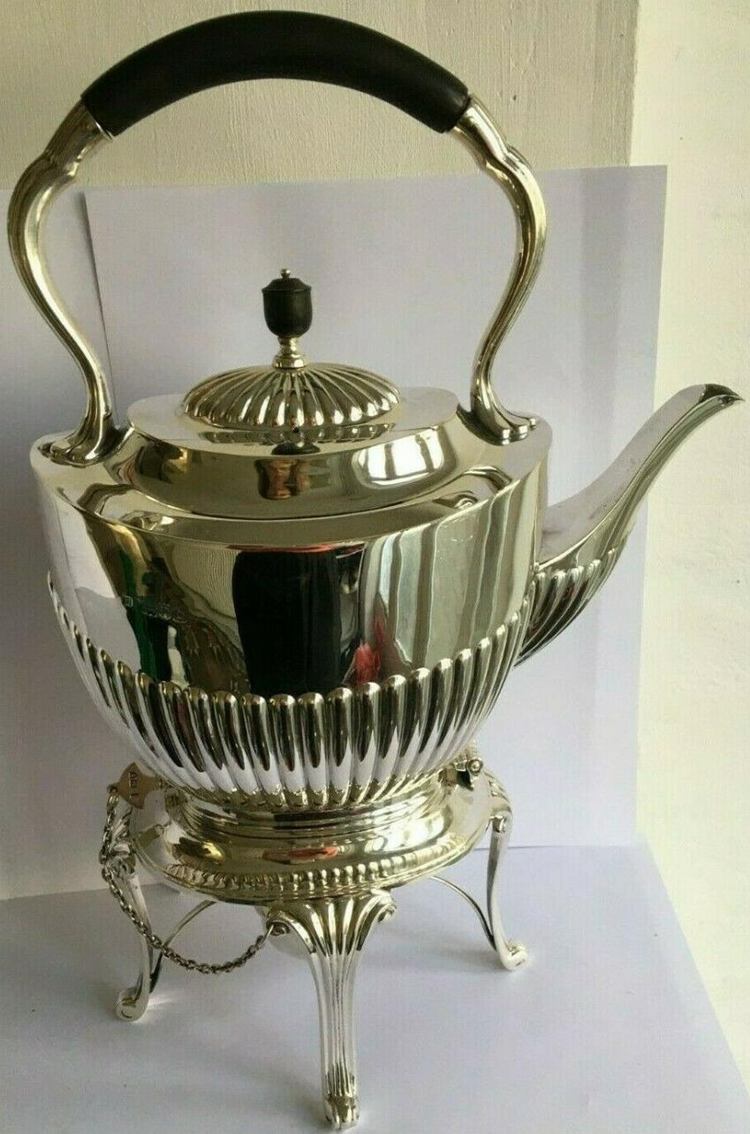
The enamel kettle
The enamel kettles are lighter than their copper and cast iron counterparts. The designs of these kettles varied from blue and white exteriors to mottled red. The downside of enameled kettles is that they get rusted easily.
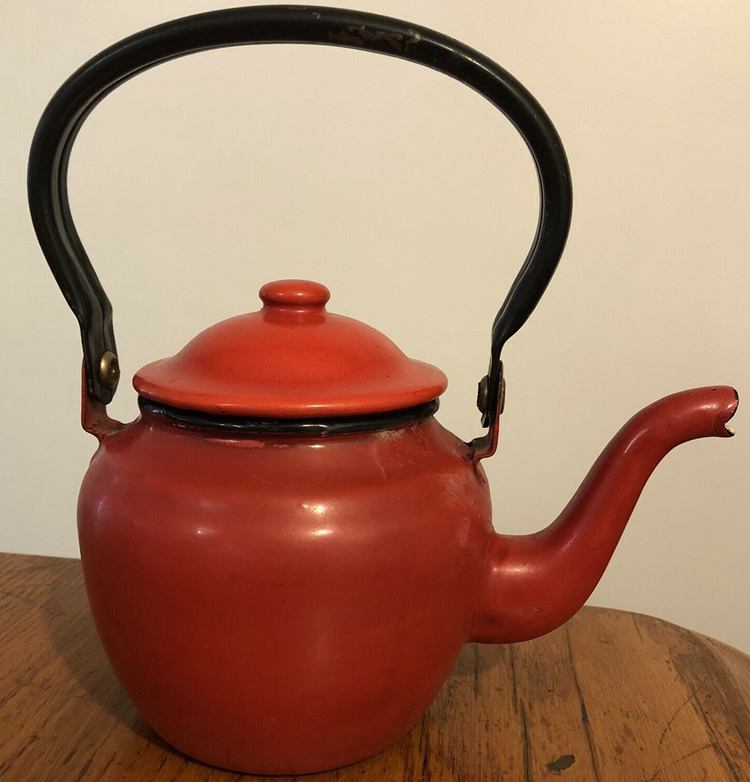
Source: ebay
How to identify antique kettles
There are so many reproduced kettles that aren’t vintage or antique. These reruns are everywhere in the market, physical and online. You could come to one of these without suspecting they aren’t genuine. Modern kettle makers have perfected the art of making reproductions. For instance, a stylish copper kettle could be engraved with symbols from the Victorian era or designed with enamel metals.
To avoid falling into these traps or unknowingly purchasing one of these imitations, you have to be very careful and watch for subtle and obvious signs.
Chemical Analysis
This technique doesn’t work for all types of vintage kettles.
You can test the authenticity of your antique copper kettle by conducting an acid test. (Hold Up! It’s not as dangerous as it sounds). You need a PH paper. If your antique is made of original copper, it would have a pH ten or more.
Suppose you’d like to know more, boil magnesium chloride in water. If the water turns green moments after it starts boiling, it is a genuine antique and is at least 120 years old.
Magnetic or not
If you have an original antique kettle, it should not stick to a magnet. If it does, then you either have a fake, or a reproduced item.
You could also check the weight of the kettle. If it weighs more than 2kg, then it is most likely original.
Check for Symbols
Below is a vintage cast iron kettle. If you look at the lid, you’ll see a star symbol. This mark is branded on all Gate antique kettles produced in the 1800s and 1900s. Other manufacturers have their own symbols and trademarks, which are stamped on different areas on the kettle. If you don’t find the maker’s mark on the lid, bottom, or side of the kettle, you can check inside or around the rim.
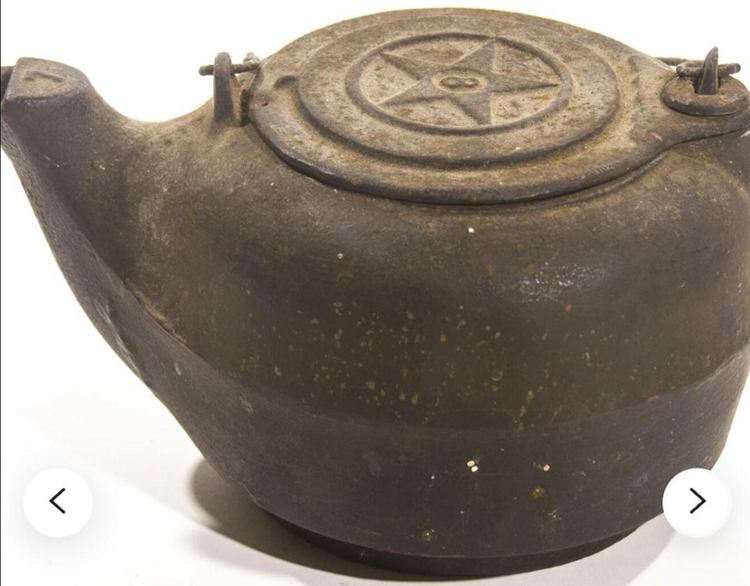
Antique copper kettles produced around 1890 often have an “L” mark on the lid. If you come across an antique kettle with a round top, oval base, and a “B” symbol, it means the antique debuted around the 1910s.
Inscriptions
Some antique kettles bear their dates of production. Sometimes, this date may not be evident to the naked eye, but you can use a magnifying glass to inspect the kettle’s body. If your antique is original, you may see etched symbols of Victorian architecture on the lid, handle or spout. While some bear designs of natural elements like trees or flowers.
Note that not all antiques bear these marks of inscriptions, specifically those produced more than 100 years ago. When you find any mark whatsoever, you can search for it in a reference guide. This will give you an idea of the era your kettle was produced.
Sometimes, you may need to thoroughly clean your antique kettle before you can find these marks or inscriptions. Antique experts use black lights to detect rust, damage, and oxidation that could have occurred over time.
Other tells to identify antique kettles include:
- Unusual shapes
- Uneven holes
- Worn out lids
Antique Kettle Brands With a Place In History
Kettles have been in circulation since the early days; during this time, some brands have influenced the growth of the industry with their ingenious designs and modifications before the 20th century.
Today, collectors have been able to identify a few dozen manufacturers who produced valuable antique kettles in the 19th and 20th centuries. However, for every recognized manufacturer, there are literally dozens of non-popular makers who are also relevant in the industry.
Some well-known brands include Gates kettles, Jewett & Roots, Christopher Dresser, Benham & Froud, Micheal Graves, Charles Noble & Company, and Joseph Heinrich.
The Gate Brand
Antique kettles produced by this company are easily identifiable because of the company’s distinct mark (a circled star). The Gate company was founded almost 150 years ago to provide quality, well-crafted kettles for different classes of society. An original Gate marked antique kettle can fetch lots of money. More, if it is a limited piece. Many antique kettles produced by Gates sometimes have a rusty look.
Antique kettles from this manufacturer can be priced from $80 and above.
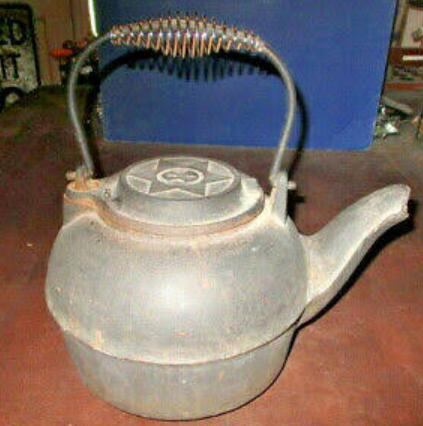
Obvious signs of rust
Source: ebay
Joseph Heinrich Brand
Joseph Heinrich antique kettles are some of the most expensive. The original copies are highly-priced. According to 1stDibs, the value of Joseph Heinrich copper kettles vary based on their age, size, and condition. The prices of original pieces listed on 1stDibs start from $300. The average price of these actual units pulls in up to $2,845, while the highest price is pegged at $68,000.
The various households with these antique coppers mostly use them as living room decor. If you’re considering buying an antique copper kettle, you should check for Joseph Heinrich Brand.
Factors That Affect Antique Kettles Values
A number of things can influence the values of antique kettles. Before collecting or selling any antique item, you must first study these three factors affecting the item’s value.
Demand
In a regular marketplace, demand is one of the most critical factors determining an item’s value. It’s the same in the antique ecosystem. An antique needs to have demand to be valuable. If an antique is rare and it has no demand, the value is going to be low.
For the value of an antique to rise, you’ll need to have a ready market full of people willing to pay any amount for it. The more the demand, especially for a rare antique kettle, the higher the value can go. This is more or less the same logic applied in auctions. Everyone is gathered to have just that one historical piece, and they’re willing to outbid the next person to acquire it.
Demand doesn’t work on its own. It works hand-in-hand with supply to create value. However, both must not be up at the same time. The most valuable antique kettles are made in limited amounts or left in limited numbers but have a high demand.
Supply
Supply is the second most crucial value determinant of an antique. When searching for an antique to collect, you must make sure it does not have a large amount of supply. Regardless of how beautiful or aged an antique is, no sensible person will be willing to pay massive amounts for it, except you’re sure the others will be destroyed soon (chances of this happening are close to zero).
Ideally, extremely rare antique kettles are the best form of investment. If you can’t afford these, you’ll go for another that is still in limited amounts. The point is that the fewer the antique is in the marketplace, the more expensive the antique could be.
Condition
Asides from the level of demand and supply, the condition of the antique kettle is another critical factor.
For an antique to be termed “valuable,” it must be in an outstanding, pristine condition. As an antique kettle collector or seller, you have to evaluate the condition of your antique. No defects or damage must be overlooked.
Antique kettles must be kept in safe locations in the home, or protective cases, so they’ll remain in the same condition you found them. If you’re confused about how to assess your kettle, you should have it appraised by an expert appraiser. You can find one of these online. These experts will tell you whether or not your antique is in excellent condition. They can also recommend exports to restore your antique razors.
This is a $13 antique kettle produced by Mulcuto Solingen in Germany. Besides the razor is its original box. If you look closely, you may observe that a blade section seems to be broken off. However, the piece is still in good visual condition. The fact that a part has broken off means it is not in the best condition; hence its value is reduced. The noticeable scuffing and scratching are expected for its age.
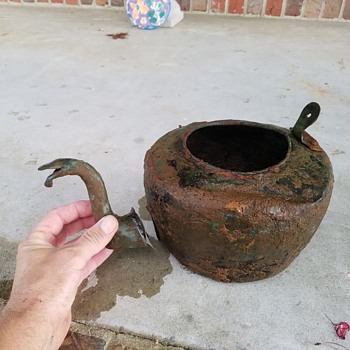
Source: Collector’s Weekly
Antique Kettle Price Guide
The easiest way to know the current value of an antique kettle is by studying how many similar pieces have been pulled in at auctions. Fortunately, in the e-commerce market, eBay has a comprehensive and well-updated sales database that can be consulted. You only need to use the “sold items” filters to view recently sold antique kettles and the prices they were sold at.
The Antique auction index is another valuable sales database tool that records the prices of several antique items sold at auction.
antique cast iron kettle value
The value of the antique cast iron kettle depends on its age and condition. Cast iron kettles were relatively cheaper than other types of kettles in the 1800s and 1900s. Currently, they are one of the most valuable antiques in the ecosystem, primarily because all cast iron antiques are handmade.
The rarer the piece, the more valuable it gets. If you have an antique cast iron kettle, do your best to maintain its good condition as they’re very good investments.
antique copper kettle value
The value of antique copper kettles is wrapped around its sentimental value. Oftentimes people do not buy the antique copper kettle because of its financial value but instead because of the story or the feelings they have about it.
Today, the monetary value of the antique kettle is determined by its age and condition, and I reiterate the sentimental value attached to them.
Price comparison is one of the best ways of figuring out the accurate price of an antique copper kettle. eBay has over 2,000 antique copper kettles listed— one of the most extensive inventory online. This makes it a perfect price comparison tool. You can compare the prices of sold, unsold, and completed orders of antiques that appear similar to yours. The prices of antique kettles range from $10 to more than $1,300.
Bottom Line
Today’s article provides basic information about antique and vintage kettles, as well as how their monetary value can be measured.
If you plan on getting an antique kettle, or you recently came in possession of one of these antique pieces, you must be prepared to study the information here and even consult more online resources to understand that the value of these kettles depends on several factors.
Identifying an antique kettle may seem difficult at first, but as they say, “practice makes perfect.” Continue trying, and one day you’ll be a pro at it.
All these and more will prevent you from splurging hundreds of dollars on a non-genuine antique kettle.
